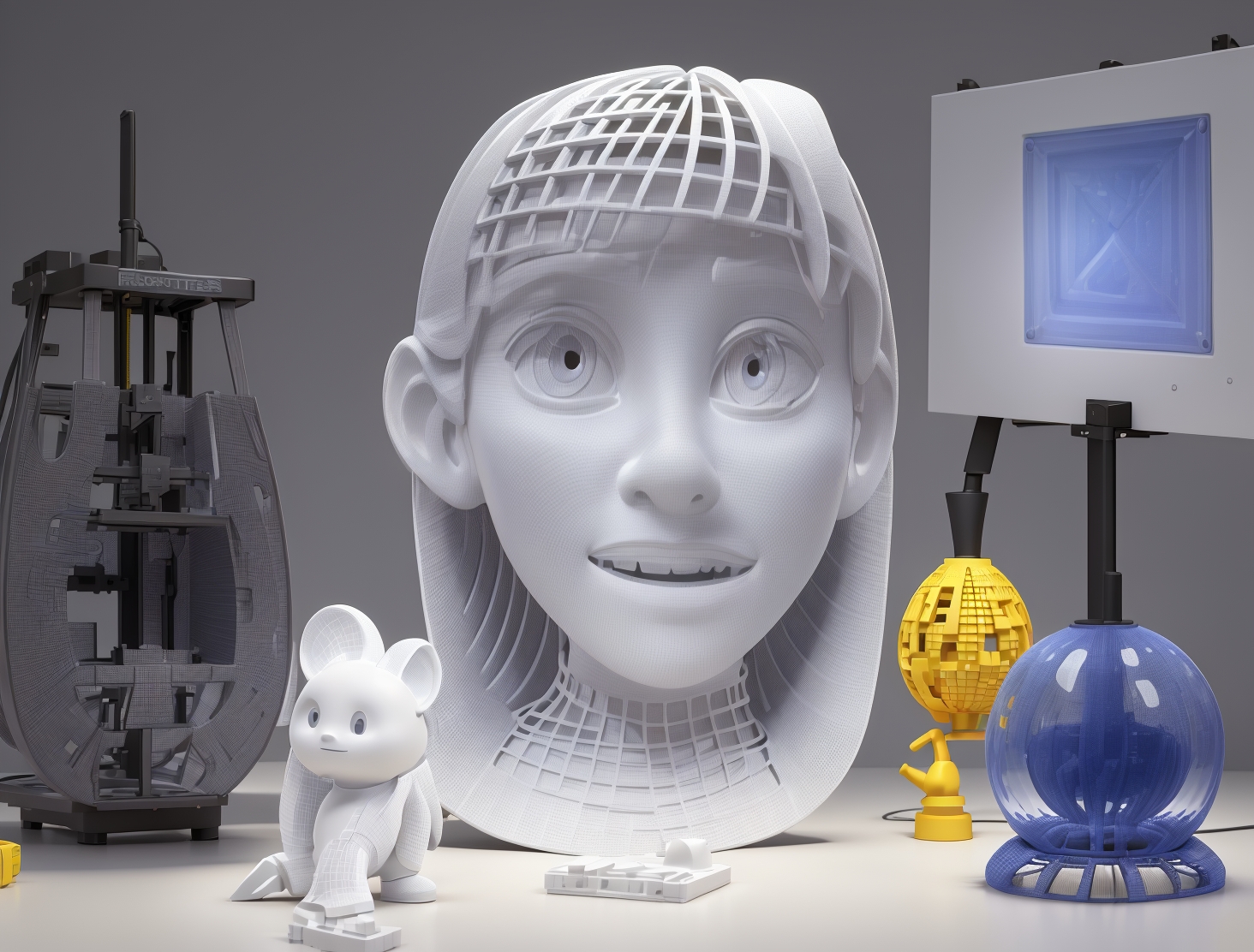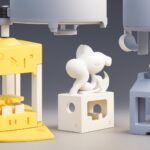3D Printing for Art and Design: New Frontiers in Creativity
3D Printing for Art and Design: New Frontiers in Creativity
3D printing has opened up exciting new possibilities for artists and designers, allowing them to push the boundaries of creativity and explore innovative methods of expression. This technology has not only revolutionized traditional design processes but has also created new opportunities for producing unique works of art that were once impossible to achieve.
The Role of 3D Printing in Art and Design
3D printing empowers creators by giving them the ability to design and fabricate objects with intricate details, complex geometries, and innovative materials. Here’s how it is transforming art and design:
Customization and Personalization: One of the key advantages of 3D printing is its ability to produce customized and personalized objects. For artists and designers, this means that they can easily bring their visions to life, from one-of-a-kind sculptures to bespoke furniture pieces. Customization is particularly valuable in the fashion and jewelry industries, where unique and individualized designs are in high demand.
Freedom of Design: Traditional manufacturing methods often impose limitations on shape and structure. With 3D printing, there are virtually no constraints on the design complexity. Artists can create intricate, organic shapes and patterns that would be difficult, if not impossible, to produce by hand or through traditional methods. This opens up new dimensions for experimentation and innovation.
Sustainable Art: As 3D printing uses only the material necessary to produce the object, it has the potential to reduce waste compared to traditional manufacturing methods. Many artists and designers are exploring sustainable practices by using eco-friendly or recycled materials in their 3D printed creations, contributing to the sustainability movement in the creative world.
Applications of 3D Printing in Art and Design
3D printing has found its place in various creative industries, from fine arts to interior design. Here are some examples of how this technology is used:
Sculptures and Installations: 3D printed sculptures are increasingly becoming popular in the art world. Artists are using 3D printing to create large-scale installations or intricate, small-scale sculptures that play with form, light, and texture. The precision and customization of 3D printing allow for experimentation with materials and designs, making it easier for artists to manifest their creative visions.
Fashion Design: In fashion, 3D printing has introduced a whole new level of creativity. Designers can now create complex patterns, textures, and even wearable garments directly from digital files. Some have even developed entire clothing lines with 3D printed garments, shoes, and accessories. The technology’s flexibility also supports rapid prototyping, enabling designers to quickly iterate on their ideas and perfect their collections.
Jewelry: 3D printing in the jewelry industry allows for the production of custom designs with precision and detail that are difficult to achieve through traditional methods. Designers can print intricate patterns, incorporate various materials, and create personalized pieces for clients. The jewelry industry benefits greatly from the accuracy and speed that 3D printing offers.
Product Design and Prototyping: 3D printing has revolutionized product design by making it easier to develop and test prototypes. Designers can create functional prototypes of furniture, lighting, or decor items, and even produce end-use products. This enables more efficient design cycles and cost-effective production runs.
The Impact of 3D Printing on the Creative Process
The integration of 3D printing into the creative process has changed the way artists and designers approach their work. Here’s how:
Experimentation and Innovation: 3D printing encourages innovation by allowing artists to explore new techniques and materials. From printing with unconventional substances like biodegradable plastics to creating artworks with moving parts, the technology fosters experimentation. This leads to unique creative outcomes that break away from the limitations of traditional media.
Digital to Physical: Artists are increasingly blending the digital world with the physical world. 3D modeling software enables them to design in the digital realm, while 3D printing brings these creations into the physical world with remarkable precision. This digital-to-physical workflow has opened new creative avenues for both visual artists and industrial designers.
Collaboration and Interdisciplinary Work: The use of 3D printing often involves collaboration between artists, engineers, and technologists. Artists can work with experts in 3D modeling or materials science to bring their concepts to life. This interdisciplinary approach leads to cutting-edge works that combine art, science, and technology.
Challenges and Opportunities
While 3D printing offers unprecedented creative freedom, it also presents some challenges:
Technical Skills: Learning how to use 3D modeling software and understanding the technical aspects of 3D printing can be daunting for some artists and designers. However, as 3D printing becomes more accessible, there are more resources, tutorials, and workshops available to help creatives master these new tools.
Cost of Equipment: While 3D printers have become more affordable in recent years, the high-end machines used for producing large-scale or detailed artworks can still be expensive. However, many artists and designers now have access to 3D printing services, which provide a cost-effective solution for outsourcing complex prints.
Material Limitations: Although 3D printing is versatile, the range of materials that can be used is still growing. Certain materials and finishes may not yet be feasible for 3D printing, limiting some applications. However, ongoing research and development are expanding the material options available, offering greater flexibility for creatives.
The Future of 3D Printing in Art and Design
As 3D printing technology continues to advance, its influence on art and design will only grow. Here are some future trends to watch:
Greater Accessibility: As the cost of 3D printing equipment continues to decrease, more artists and designers will have direct access to this technology, fostering a new wave of digital artists and makers.
Hybrid Art Forms: The fusion of 3D printing with virtual reality (VR) and augmented reality (AR) is set to create new forms of hybrid art. Creators will be able to design in virtual spaces and then bring their works to life through 3D printing, offering a seamless digital-physical experience.
Sustainable Art Practices: As concerns about sustainability continue to grow, 3D printing offers artists and designers an eco-friendly alternative to traditional manufacturing methods. By using recycled materials or developing biodegradable printing materials, creatives can reduce their environmental footprint while continuing to innovate.
Conclusion
3D printing is a game-changer for the world of art and design. Its ability to push the boundaries of creativity, enable customization, and foster innovation makes it a powerful tool for artists and designers alike. As the technology evolves, we can expect to see even more groundbreaking creations and new frontiers in creativity.



